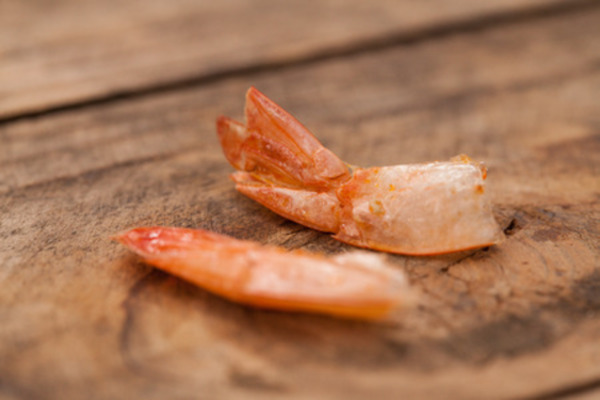Shrimp has a separate fan base around the world, including people who prefer shrimp dishes over other delicious fish and chicken items. And also, you can find people who don’t like to eat shrimp or shrimp tails.
Also, shrimp is very popular because of its delicate taste and for its significant flavor that can turn a normal dish into a delicious one. Shrimp have different tastes between tails and heads and are used to eat separately or in whole.
And, shrimp tails are the short, curly edges of shrimp that are mostly discarded when some people still use them to eat without complaint. That is why the question naturally comes up is shrimp tail edible? Yes, there is no doubt that shrimp tail is edible and full of beneficial nutrients.
Let’s jump to the following questions and answers to get a clear idea about it,
Is shrimp tail edible or not?
Yes, shrimp tail is completely edible but there are things to consider before eating it.
Shrimp are the cause of unwanted allergic reactions, especially for children. Sometimes, it can be so severe that in some cases the infected person may have to go to the doctor for a prescription.
So, before taking it, you need to make sure that you do not have shell food like shrimp allergy.
Do shrimp tails have nutritional value?
In general, the body of a full-grown shrimp is covered by a shell that protects its soft fleshy body inside. The shrimp tail includes some important parts like Telson, Endopod, Exopod, and Europod.
These parts are of no use except to aid in swimming and are therefore often discarded. However, some valuable meats can be included in adult shrimp tails that are much larger in size than normal. These types of fleshy shrimp tails can be used in some special food items to add extra context to the flavor.
Also, shrimp tails have nutritional value because they contain zinc, iron, calcium, magnesium, phosphorus, selenium, copper, manganese and vitamin B12.
What is shrimp shell made of?
To protect itself from danger, shrimp has got this shell naturally which is made up of calcium carbonate (CaCO3) and chitin. In addition, chitin is a polysaccharide similar to the carbohydrates found in plant cell walls and exoskeletons of other arthropods.
Due to some of its beneficial properties, chitin is widely used for many industrial purposes. You can find this ingredient in several consumer products, pharmaceuticals, animal feed, fertilizers, etc.
What nutrients are in shrimp shells?
Shrimp shell has a significant impact on our body functions and is highly beneficial to plants when used as fertilizer.
It is actually a composition of many minerals such as calcium, magnesium, iron, zinc, copper, manganese, and phosphorus. If you have a little knowledge about plant nutrition, you may know how these minerals play a vital role in plant health.
Also, another chemical compound found in shrimp shells is chitosan which is known as a dietary supplement and reduces obesity and high cholesterol.
What are the benefits of eating shrimp tail?

In addition to its high nutritional value, shrimp tail, shrimp shells can be a natural source of many important nutrients for our body.
When most people go for its unique test, they are not even aware of the benefits of eating shrimp tail. Let’s see the benefits of eating shrimp tail from the below options,
Helps build muscle
Shrimp tails include necessary compounds that help our muscle build. As the shrimp tail and shrimp shell are full of calcium and a great source of high quality protein. Calcium improves bone and teeth health and protein helps build strong muscles and bones.
Rich source of vitamins and minerals
You can say shrimp is the volt of necessary vitamins and minerals such as copper, manganese, selenium, zinc, iron, phosphorus, etc. These minerals are not only good for plants but also for human body and brain functions.
Also, shrimp tails contain vitamins A, B6, C, D, E, and K which are required to maintain a healthy life. Vitamins play a regulatory role in most of the body’s activities. To get plenty of vitamins and minerals at once, you may want to consider eating shrimp tails as well as shrimp shells.
Boost nervous system
Along with such essential vitamins and minerals, you can also get micronutrients that are effective for your nervous system. For your convenience, each pound of raw shrimp contains 0.1 mg Thiamin, 0.1 mg Riboflavin, and 8.1 mg Niacin which are well known to our nervous system.
Lower high blood pressure and obesity
Shrimp shells and shrimp tails are also good for lowering high blood pressure because they contain omega 3 fatty acids. Therefore, people who suffer from obesity and high blood pressure keep shrimp in their diet plan to reduce the chances of heart disease and stroke.
What goes well with shrimp tail?
Shrimp are well boiled, fried, or cooked with vegetables. Sometimes it is used as the main ingredient in certain foods and sometimes it is only used for flavor. Also, you can make a paste with shrimp and other ingredients and cook delicious items with it.
However, to enjoy the best of shrimp tails, you can consider taking it with fried rice, fried potatoes, roasted vegetables, broccoli, and also with salad and noodles.
Final Verdict
Now you have the answer to the question of whether the shrimp tail is edible or not. And the verdict goes to its edibleness.
But before that, you should make sure that you do not have food allergies. Because of the shell it usually seems to be an allergy in children and also for adults and older people.
However, symptoms of shrimp allergy include hives, itching, swelling, vomiting, diarrhea, and breathing problems. Despite causing allergic problems, it is still considered an excellent shell food item not only for taste but also for nutrition. You will find many delicious Thai and Chinese shrimp dishes in most restaurants near you.